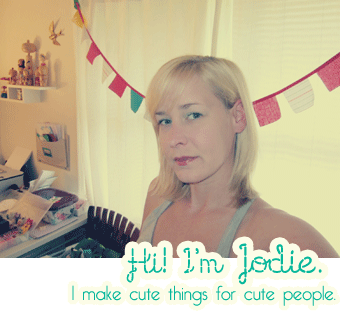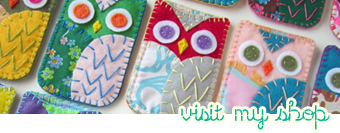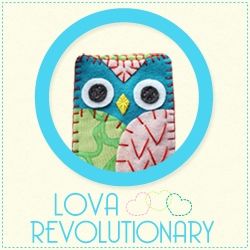Once the epitome of uncool, craft is making a comeback with a new generation. Rachelle Unreich threads up to find a burgeoning movement that is hip, political - and just a little divided.
If you were to meet Gemma Jones on the street, you might notice the following: hair swept up in a beehive, distinctive, quirky tattoos (one, on her arm, features a hand pointing to a teapot), loud clothing and a green plastic necklace that says "snotty". You might be surprised to learn, then, that Jones also started her own craft group. Mind you, hers is not your crochet-a-tea-cosy group of grannies: her "alternative craft co-op", the Kaotic Kraft Kuties, once got together and turned old band T-shirts into knickers. "I'm probably at the young, punk-rock end of the craft community," she says.
Is there such a thing? Yes, indeed. The art of craft has gained momentum with the hipsters. Sewing, toy making, knitting, crocheting, embroidery and printing - in that order - are the most popular crafts, says 40-year-old Pip Lincolne, who sells many such handmade items at her store, Meet me at Mike's. The author of a book of craft projects, she also heads up craft circle Brown Owls, which has 250 members and a Facebook presence. Clearly, Nanna's not the only one making Afghan squares any more.
"Crafting used to be looked on as something for grannies or Stepford wives, but apart from an amazing way to get creative, people also do it to be green and sustainable. It's the 'mend and make do' ethic," says Lincolne, explaining its appeal. "And now, with the global financial crisis, people are staying home and crafting or reading. It's lovely to be able to sit in front of the tele and end up with something unique."
But these women - the groups are almost exclusively female, mainly between 20 and 35 - aren't just meeting to complete their quilts. Says Lincolne: "The craft community is like a big, stitched-together sorority. I had no hesitation, for instance, to email (documentary filmmaker) Faythe Levine in the US, asking her over for a cup of tea when she was in Melbourne (to promote her film on craft, Handmade Nation), because we're cobbled together with the same sort of glue - we both like making stuff! And she came over, we hung out, I introduced her to other friends. The craft world is about making, music, food and friends - and the other elements are as important to me as the 'making'."
Gemma Jones agrees. "Half of the reason people come is social. I can definitely say I've made some friends for life." To wit: Ink & Spindle is a Melbourne screen-printing studio whose owners - Lara Cameron, Bianca van Meeuwen and Tegan Rose - furthered a friendship through the craft blogging world and set up shop together. "The community feels old-worldy and everybody knows everybody in it: if you think back to the pre-industrial revolution, it's the sort of community you'd have in your village then," says 25-year-old Rose.
Only this is a village with broadband access. Nearly every modern crafter concedes that the internet has changed the world of crafting, since DIYers start blogs, form online clubs, post photos on Flickr, swap ideas and sell their wares online. Etsy.com, a marketplace for all things handmade, has been going for less than four years but has 170,000 sellers on board. According to Bec Davies, 32, owner of madeit.com.au, which features 350 Australian sellers, "The internet becomes a large part of your life: not only as a selling tool, but a social network where good friendships are formed." But Jones points out that "while the internet plays a strong part in keeping the network together, what makes crafting appealing is the very hands-on, realness of it all."
Perhaps that's why it's not a passing whim, forgotten when the next Twitter trend arises. "Rather than a fad, it's a way of life," says Lincolne. Part of Lincolne's philosophy is that crafting should create something positive. "Twice a year, Meet me at Mike's puts a call out for people to craft for the Mirabel Foundation (which helps children who've been abandoned or orphaned due to parental drug use). They make a soft toy, and we pass them on to the kids at Mirabel. But first, we display the toys for two months in our shop window; it's important that our neighbourhood sees that we're putting (something) back in." Similarly, the Kaotic Kraft Kuties held a raffle of donated craft and artwork that raised more than $12,000 for bushfire survivors.
Rayna Fahey, 29, of www.radicalcrossstitch.com, takes the notion of crafting for good even further. As part of one of the "craftivists" around, she uses craft as a form of creative action and protest, addressing topics such as indigenous sovereignty and women's liberation. As such, she's the co-founder of the Melbourne Craft Cartel - for crafters with a radical edge - which runs events and produces a podcast. She thinks craft has become hip because "many young people have come to the conclusion that rampant consumerism has to end". The resurgence of handmade has a lot to do with people wanting to reduce their impact on the Earth. She also sees the current financial crisis as a factor. "It's certainly increased interest in the economic benefits of craft. The last time we had a global depression was the birth of the classic craft saying, 'Use it up, wear it up, make do or go without'."
By contrast, Jones believes the edginess inherent in the new craft movement has resulted in an attitude that's almost "anti-nesting". "I don't think that the personality of new crafters is about retreating or getting cosy or feeling the fear; it's about getting out and being loud."
Within crafting, there are different approaches. On the one hand, Jones represents the attitude of many crafters who've responded to a world that combines kitsch and creativity. "It's about doing things in an individual way, and it's a bit dirty and a bit wrong," says Jones. "It's about injecting a bit of humour into it. It's not about getting all the stitches right; it's about having fun."
Typical of this point of view is Shannon Lamden, who sells everything from tote bags to cushions through her Etsy store, Aunty Cookie. "I am self-taught; I don't come from an overly crafty background, and I can't sew a straight line, but I try hard and I like to think I cover up my mistakes well."
At the other end of the spectrum are crafting traditionalists, such as Pene Durston, 43. She owns a craft design store, Cottage Industry, sits on the board of Craft Victoria and airs her opinions on MissPenPen.blogspot.com. With a weighty background in textile design, she also teaches at RMIT. "Craft is not something I've come to in the last couple of years. A lot of people crafting at the moment came to it really late. There's a whole generation of people who never learned to knit or crochet or mend - they just went to a store and bought ... it's a different mentality." While Durston has no problem with this approach, she has reservations when it comes to some of these goods being sold.
"These days, a lot of people are selling crap; it's not up to a good enough standard ... Now, craft is a very loose term covering a lot of things - ceramics, textile and fashion - and it's also done by hobbyists, as well as professionals. There is a vast difference." Although she stresses that there's a place in the craft world for everyone, she is concerned that the ethos behind institutions such as Craft Victoria could be lost - "the importance of the 'hand' in the production of work, and the high level of skill invested by makers in their craft."
Her thoughts are partly echoed by Douglas & Hope owner Cathy Hope, 39, who sells her quilts - along with fashion and homewares - through her store. "Quilting is such a long-term investment; the first ones I did took a year each to make. There's a fine line between good, commercial craft and - without saying it awfully - the bad. I would encourage everyone to sit at night and do something creative. But when they want to turn it into an industry ... there needs to be a certain standard of quality."
Still, both groups would agree that the world of craft is more vibrant than ever. Levine's movie, Handmade Nation, outlines the indie edginess of craft, featuring artists such as Whitney Lee, who uses latch-hooking pornography to convey her views about the way women are portrayed in the media. Levine's film also profiles a guerilla knitting group named Knitta ("PolyCotN" is the name of one of the founders), which places knitted objects in public places - one wrapped around a cab antenna in New York, another covering a rock along the Great Wall of China - making it a yarn version of graffiti.
"For a long while," says Jones, "craft has been a little bit of a dirty word, but now people are embracing it and giving it new value. I'm glad I've been part of that ... There really is a big groundswell of people who want to connect with crafting. Maybe it's partly fashion and trend-hopping, but some of these people who jumped on the bandwagon have had their lives changed. They're not getting off."
Want to get crafty? Places to start
www.Etsy.com Sells handcrafted items from all over the globe. Prices are in US dollars, but most sellers ship to Australia.
Meet me at Mike's (http://meetmeatmikes.blogspot.com, 63 Brunswick Street, Fitzroy) Fashion, homewares and quirky gifts make up this cool emporium.
My Poppet (www.mypoppet.com.au, 717 Glenhuntly Road, Caulfield South) Carries handcrafted clothes and accessories plus kids' decor and toys.
Patchwork on Central Park (www.patchworkoncentralpark.com.au, 148 Burke Road, Malvern East) Fabric heaven for sewers, with patterns and kits available. It also runs classes.
in.cube8r (www.incube8r.com.au, 321 Smith Street, Fitzroy) More than 75 crafters hire cubes to showcase their wares.
Craft Victoria (www.craftvic.asn.au, 31 Flinders Lane, city) Its shop, Counter, features limited-edition homeware items, jewellery and accessories. An exhibition Viva La Craft! is on until April 24.
http://craftcitymelbourne.blogspot.com A directory of what's happening in Melbourne's craft world.

































1 comment:
that's sounds interesting
Post a Comment